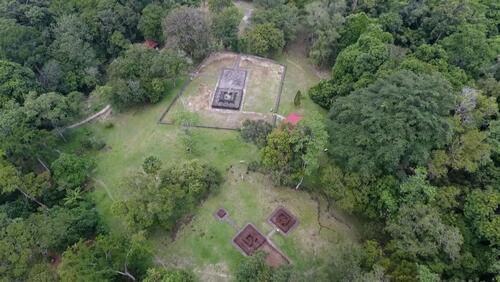Does Malaysia Need Civilizing?: The Case of Bujang Valley

Does Malaysia Need Civilizing?: The Case of Bujang Valley
Anwar Ibrahim’s Malaysia Madani (Civil Malaysia) is a policy framework that promotes good governance, sustainable development, and racial harmony. Hence, it is an effort to civilize, modernize and progress the nation to greater heights. Ibrahim assumes that Malaysia lacks civilization and claims modernization is the only path to national progress. These harmful assumptions allow many to believe that Malaysia lacks history and history is not valuable. In fact, this is not the case. Malaysian civilization is the oldest in Southeast Asia. The right claim to make is not “Malaysia needs civilizing” but “historical erasure due to ethnonationalism has harmfully impacted policy and research.” The case of Bujang Valley elucidates how ancient history has become a site for contestation.
Bujang Valley (Lembah Bujang)
The Bujang Valley is a 1,0000 sq km archaeological complex that dates back to 788 BC, before Angkor Wat and Borobudur. Evidence proved that it was an iron smelting, trading and Hindu-Buddhist site. Colonel James Low first uncovered it in the 1840s, but excavations only began right before World War II. The site regained contemporary attention when new excavations began in 2009.
Now, Bujang Valley is a growing archaeological museum. Visitors can learn about the oldest civilization in Southeast Asia and begin to grasp the site’s highly sophisticated heavy industry production, trade, social organization, and religion. The research shows us that the people of the Bujang Valley were creative, skilled, multicultural, multireligious craftsmen and merchants. Heavy industry, trade and multiculturalism are the bloodstream and heartbeat of Malaysia. The Hindu-Buddhist temples and artefacts from China, India and Arabia prove the nation’s multiculturalism.
Nonetheless, the preservation and education efforts have faced challenges from Islamic fundamentalists and ethnonationalists. They viewed these findings to challenge their claim of indigeneity and claim to political privileges (Malaya supremacy). Hence, funding and interest the the preservation and education efforts are limited. Professor Mokhtar Saidin, the previous lead researcher, has lamented this condition but has urged the government to increase federal excavation funding because this site is “Malaysia’s natural heritage, identity and pride.” He also provided an economic argument: good preservation may increase archaeotourism and regional income.
Lessons from Bujang Valley
The passive and active historical erasure of Bujang Valley, with other protohistorical sites in Malaysia, has limited research and public knowledge of the nation’s history. This is no accident because the government only wants to remember and reify historical narratives that further their positions and policies. This is why Ibrahim can get away with a snazzy slogan which cannot aim to do what it achieves because its premise is false.
Malaysia doesn’t need civilizing. It needs to uplift hidden and marginalized histories. We can learn that Malaysia has been multicultural from its genesis and ethnonationalism has no place in the nation. We can learn that Malaysia has a comparative advantage in trade and heavy industries, and contemporary policies should support these sectors.
Moving Forward
Historical knowledge can problematize the linearity of modernization and prevent repeating past mistakes. Crucially, it can teach us who we are as a nation, informing us who we want to be. Thus, historically-informed modernization efforts may be more aligned with a truer essence/identity of a nation, which might make it more effective. I doubt that Ibrahim wants to reproduce an ineffective neo-colonial state. Therefore, it is critically important for the lessons from the first civilization not to be lost on this one. Preservation and modernization must co-exist, especially in a climate where historical religious and ecological sites are being destroyed for development, mining and extraction. Brian Wong, a Hong Kong-based political theorist, argues that the adjacency of the old and the new is required for a resilient nation. He says this adjacency is the “blurring of the lines between the pre-modern, modern, and post-modern, [which] undergirds dynamic cultures that are resilient amidst the challenges presented by hyper-globalisation.”
Sources: